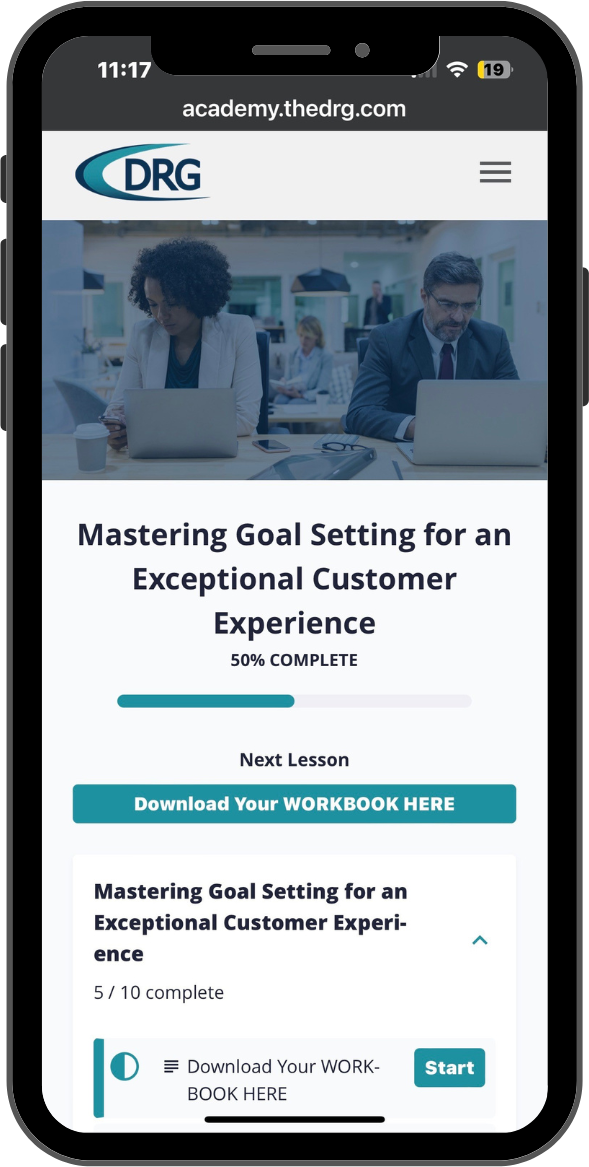3 Sources of Powerful Competitive Intelligence Research to Inform Your Customer Experience Strategy

If you’re a marketer, customer experience professional, or executive, you probably have customer numbers on the brain almost 24/7.
With customer churn rates as high as 30 percent in some markets and relentless competition running rampant in every industry, it may seem like you’ve tried everything under the sun to retain loyal customers and bring in new ones. So how do you get off the customer acquisition/retention hamster wheel?
We’ll answer our question with another question: What’s one of the biggest missing pieces of any successful customer experience strategy?
The answer: an integrated competitive intelligence program.
Gathering and analyzing competitive intel and using insights to inform the right customer initiatives is an essential business strategy – and we’ve got all the practical guidance needed to help you leverage it.
Understanding Competitive Intelligence for Customer Strategies
Enhancing customer experience through the smart use of competitive intelligence and analysis is something marketing researchers help our clients do. It’s also something that a surprising number of businesses treat as an afterthought or separate initiative from their CX research program.
Of course, the customer experience insights from your program are still top priority. But layering competitive intelligence into your existing CX research helps put context to your scores and gives them more meaning. Otherwise, you may be unintentionally evaluating your scores in a vacuum, which could ultimately have you chasing your tail.
At its core, competitive intelligence research is the collection and synthesis of data about your competitors, market trends, and customers. This combined knowledge often forms the bedrock of strategic decision-making and serves as an invaluable tool to help you anticipate (and act on) what your customers want next before your competition does.
Sounds simple enough, right?
It would be, but with volumes of information out there from what feels like a billion different sources, it can be challenging to figure out the best approach to get truly useful competitive intelligence.
So, let’s start with how to best gather information, and from which sources.
Sources for Competitive Intelligence Research and Data
In general, ongoing and comprehensive market research is an indispensable tool that keeps you on top of industry developments, emerging trends, and market shifts – at any given point in time. But before diving into the data, you might consider first narrowing in on 3-5 key competitors whose activities you’ll track and analyze. You might even consider including a company or two in an adjacent or completely different industry who excels at delivering great experiences, too.
This targeted approach is also touted by John Horn, author of Inside the Competitor’s Mindset. Horn says, “Companies doing competitive intelligence [research] often try to collect all data about all competitors all at once, but they lack the staff or the ability to analyze the information and develop insights. You should start small. Who are the major competitors you want to track, and what do you want to track about them?”
Identifying these key companies and areas allows you to track competitors’ go-to-market strategies, marketing activities, product developments, and business moves more effectively than trying to cover all your competitors and their every activity. It’ll also help you tailor any component of your CX strategy to outshine these key companies specifically and invest your resources where they’re most impactful.
That said, when it comes to gathering competitive intelligence, we start where we always do: with the data we already have at our fingertips.
Competitive Intelligence Research Source 1: Your Own Customer Feedback
There is a lot to be learned about your competitors from your own customers and former customers. First, you have to find out what’s most important right now to your customers when it comes to the experiences, products, and services you and your competitors provide – and why it’s most important to them. Do they care most about price? Flexibility? Customer Service? Brand integrity? Product features? Digital experiences? Personalization?
Yes, they probably care about all of these. But a select few will be the difference between loyalty to you and a wandering eye toward your competitors.
Here’s another consideration: it’s possible that your customers have recently purchased from your competitors or engaged with them in some way (we know – the horror!). Conducting surveys to gauge how your customers perceive the competition, what they want most (or least) from you or your competitors, and what they value most (or least) can help you get an unfiltered perspective on your brand perceptions.
We highly recommend regularly layering this kind of competitive intelligence research into your existing CX tracking program or working with your research vendor to do a supplemental study on customer perceptions of your competitors.
In fact, one surefire way of consistently gaining competitive insights is to consider partnering with a professional marketing research firm to conduct regular competitor surveys, market analyses, and assessments of consumer attitudes toward you vs. your competitors.
This kind of ongoing research can be a huge marketing and business asset but can quickly become overwhelming and resource-draining for in-house teams to take on as it must adhere to a host of ethical and statistical guidelines and best practices. Marketing research firms not only have the resources and technologies to navigate guidelines, data collection, and analysis with ease, but they can also provide better context and storytelling around the results. Plus, professional marketing researchers can conduct this research blind, which is widely considered the best practice to eliminate bias.
COMPETITIVE INTEL PRO TIP: Consistently surveying all lost customers about why they left – as soon as they leave – and regularly analyzing the data (traditionally called win-loss analysis) can help you understand what levers to pull to up your retention scores and gain the right customer and competitive insights to keep them trending upward.
And don’t forget about the “win” part of win/loss! Surveying new customers about why they chose you over the competition can yield just as many insights as the reverse. This is something many companies tend to overlook and can give you a leg up in your overall customer experience strategy and go-to-market messaging.
Competitive Intelligence Research Source 2: Industry Reports and Benchmarking Studies
If you want a well-rounded competitive intelligence program (and more accurate insights to leverage), you should also consider tapping into some combination of industry reports and outside benchmarking studies.
The expert opinions and insights from these resources can provide a broader view of market trends and emerging consumer behaviors. Examples might include The American Customer Satisfaction Index, Forrester, Gallup, Satmetrix and JD Power.
A small word of caution here: industry reports and benchmarking studies can be great sources of information, but it’s important to understand how these types of subscriptions may differ from proprietary research. For example, the geographical footprint, branding nomenclature, and methodological comparisons they use may differ from your typical or preferred approach. Don’t take these insights at face value and always seek to understand the framework and methodologies that led to them.
Remember that data-driven decision-making is the key to ensuring your strategies are rooted in reality, not assumptions or conjecture. And, most importantly, that your customer strategy is sound not just in the scores or numbers it produces, but in being informed by both the voice of your customers and the larger market.
Competitive Intelligence Research Source 3: Your Competition’s Online Presence
Keeping tabs on your competition’s online presence is a popular competitive intelligence strategy for many companies. And for good reason – the competitive insights this strategy can yield are widely available and totally free.
Customer reviews, testimonials, and ratings on a competitor’s website, industry review sites, or even Google reviews can help you analyze what customers praise or criticize most about your competition and provide a line of sight into their preferences and pain points.
Pricing details, ad campaigns, and press releases can also reveal how your competitors position themselves in the market – especially as consumers become more price-conscious in 2024.
Additionally, reading through competitor press releases and news sections can provide information on recent company developments and strategic shifts.
However, while popular, this strategy on its own may not yield the most in-depth insights to help you grow and retain customers at higher rates than your competitors. That’s why we’d recommend prioritizing insights first from your own customer data and research, then industry reports and benchmarking studies, and finally layering these online presence insights in.
Bonus Tips: Building a Competitive Intelligence Research Culture and Measuring Success
Creating a culture within your organization that prioritizes and values competitive intelligence can catapult your success in leveraging these insights.
For example, involving cross-functional teams in the competitive intel gathering and analysis process can foster a spirit of collaboration, data-driven decision-making, and continuous learning. It also makes alignment on the development of subsequent customer strategies much more organic. After all, competitive intel isn’t just for marketing, customer, and brand teams – it can benefit every area of your organization, and sometimes in surprising ways.
Once you’ve collaborated cross-functionally to develop customer strategies informed by your competitive and CX insights, you of course want to ensure that your strategies stay on the right track. When you set new CX efforts in motion, it’s crucial to then measure their success through well-defined goals and KPI metrics. These metrics allow you to assess the effectiveness of competitive intelligence-driven customer experience strategies and refine them continuously.
Need a framework for measuring the success of CX initiatives?

Check out our CX Goal Setting training course to access our time-tested approach to keeping customer experience initiatives on track with measurable and achievable goal setting.
The Bottom Line: Marrying Competitive Intelligence Research with Your Candid Customer Perspectives
Competitive intelligence is an essential component of any successful customer experience strategy. To leverage this powerful tool effectively, it’s important to understand the best sources for gaining the type of insights you need and how to leverage them. Once you understand this, using those new competitive insights to identify and adapt your CX strategies becomes easier. As always, remaining laser-focused on your specific customer perspectives and pain points when deciding where to focus competitive intelligence efforts can help you ensure your initiatives bear fruit in reality – not just in theory.
